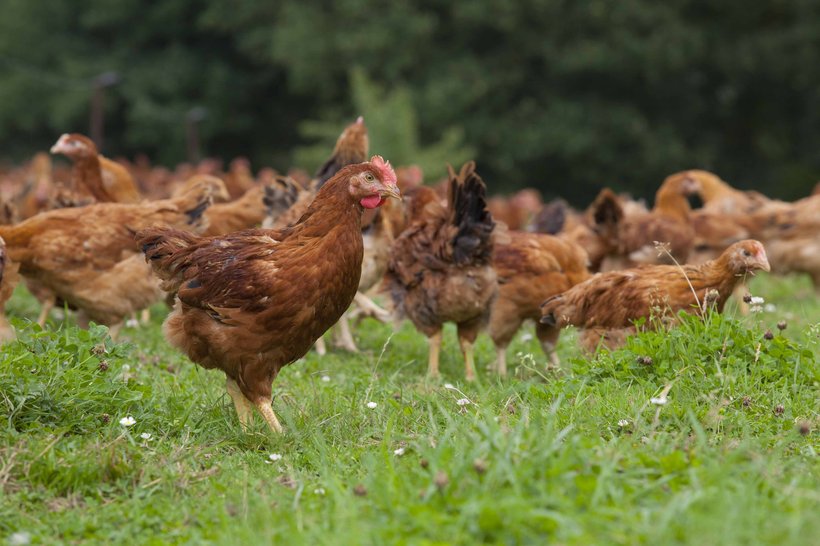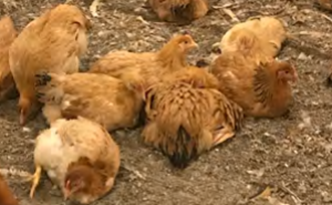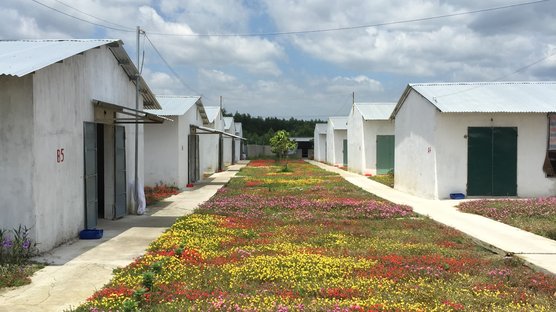
Published on June 15, 2023
Specific behaviour in production
Amongst all the phenomena that may deteriorate laying quality is floor laying and the phenomenon of brooding layers. Conversely some behaviours should be encouraged to promote the welfare of your animals.
Floor laying
During the eversion of the oviduct, which occurs during laying, the hen needs to isolate to avoid any risk of aggression and to feel safe. The nest, whether individual or collective, should protect her during this delicate phase.
However, numerous phenomena can cause floor laying:
- Starting laying in the rearing building before transfer to the reproduction building (this may happen when the light programme is not adhered to or the intensity recommendations for rearing have not been applied (insufficient light intensity).
- Period between transfer and start of laying too short, less than 2 weeks. In particular, the transfer should not be made after 20 weeks.
- Lighting duration too short preventing good egg synthesis.
- Males that are too aggressive.
- Insufficient number of nests in the nest box with manual collection.
- Laying surface insufficient in automatic nest box.
- Access to the nests limited by feed chains that are too low, by a slats that is too great, or by any other obstacle.
- Not very attractive dirty nests, cold nests.
- Feed distribution while the majority of females are in the nests.
- Insufficient collection of eggs on the floor (the hen finds her egg on the floor, she continues to lay on the floor and thus causes her contemporaries to do so).
- Feeding and watering durations too short creating a waiting behaviour in the female which therefore does not lay.
- Draughts: for example in winter a draught on the slats will dissuade the hens from accessing the nests. Generally the birds will always seek to remain as close as possible to the floor to protect themselves from cold.
When floor laying is observed, it is possible to place fencing around the floor laying areas in order to prohibit access, but it is necessary to ensure that this does not hinder the movement of males and females in the building.
Brooding Layers
The presence of broody hens in a batch of SASSO breeding hens must be checked when the batch reaches peak laying.
This check is performed:
- In the evening for manual nest boxes. The farmer counts the presence of broody hens in the laying nests.
- When feed is distributed for automatic nest boxes. The farmer checks whether there are hens in the nests or grouped on the floor or on the slats.
Vigilance should increase if the number of broody hens increases every day.
There are many reasons for this phenomenon:
- Floor laying (main cause)
- Hens that are too heavy
- Presence of eggs in the nests in the evening in manual collection nest boxes
- Nests closed too early in automatic collection nest boxes
- Stress of any kind (disease, heat, etc.)
- At start of laying, insufficient feed ration between 30% and 40% of laying: the hens are hungry and wait, which may cause broody behaviour.
The behaviour of these hens can be improved. Ask advice from your SASSO technician.

Positive behaviour

Observation Point
The litter must be dry, friable and homogeneous to d’observation allow the hens to express many natural behaviours. Dust baths are essential for their well-being because they enable the quantity of fatty substances on the feathers to be regulated. Other behaviours are also a proof of a positive mental state in hens: stretching of wings and legs, exploration (with the beak or the feet by scratching), toileting of the feathers, etc. It is important to observe these behaviours in your animals.




